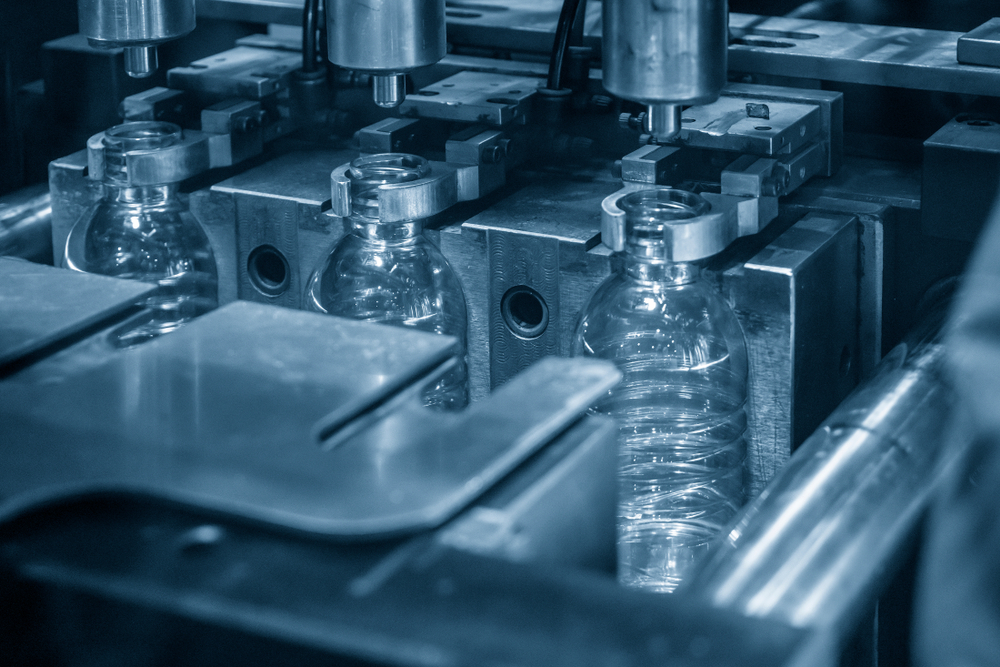
Rotational molding and blow molding are two common methods to make plastic items, from baby bottles and hollow containers to furniture and tanks. You can improve your molding processes with water-based mold releases that can reduce wear and tear on your molds, lessen your downtime, and help your equipment last longer.
Find out about the pros and cons of rotational molding versus blow molding in today’s blog.
Related Post: 8 Benefits Of Mold Release Sprays
Rotational Molding
The purpose of rotational molding, also called rotomolding, is to create parts with uniform wall thicknesses, high stability, stiff structures, and high-quality finishes. It’s best suited for large, hollow pieces such as tanks, coolers, kayaks, and tubs. Think rigid insulation made from thermoplastics, holding tanks for water, and transport tubs for raw materials in food production. You can also make containers from metals such as aluminum.
Advantages of Rotational Molding
There are plenty of advantages to rotational molding.
- Rotational molding lets liquids spin and settle against walls. Once the coating stops and cools, it creates consistent wall thicknesses.
- Molded parts are one solid piece, making them highly durable without any joints that can weaken the structure.
- The internal pressure remains stable throughout the rotational molding process, which lowers the risks of defects.
- Thick corners make the tanks stronger. Low operating pressures allow metals to cool all the way and can create surface finishes with fine details to make textures, logos, symbols, and lettering.
Disadvantages of Rotational Molding
While high-tech and revolutionary for many plastic pieces and metalworking, rotational molding isn’t for every process.
- At eight rotations per minute, rotational molding may take up to three hours for one piece, along with the labor to run the machines. However, larger pieces can help you recoup your costs.
- Raw materials are limited to those that can be made from granules or fine powders that have high thermal stability.
- Similarly, these materials cost a lot of money.
- Due to high temperatures, molds may give out after 3,000 cycles, either needing refurbishment or replacement.
Blow Molding
Blow molding works better for smaller items, using air to blow materials into the shape of the mold as the molten materials cool. Blow molding has three main types: extrusion, injection, and injection stretch. This process works well with plastic or glass, such as drinking bottles and Christmas ornaments.
Related Post: Finding The Right Mold Release For Injection Molding
Advantages of Blow Molding
Blow molding has been around since the 1930s, and it is inspired by traditional glassblowers.
- It’s relatively low cost for large-scale production.
- Customizable among many sizes and materials, so long as they can be in liquid form before solidifying.
- You can easily add external covers and materials after the pieces cool.
- A fast process, producing potentially thousands of pieces per hour.
- Versatility among several industries, like pharmaceuticals, healthcare, and CPG.
Related Post: Best Practices For The Molding Industry
Disadvantages of Blow Molding
For all of its advantages, there are some downsides to blow molding.
- Design limitations generally keep these pieces smaller, which is not appropriate for larger tanks and storage containers.
- Plastic is a petroleum-based product that is not as eco-friendly as glass.
Related Post: Mold Release Agent FAQs
Turn disadvantages into advantages.
EZ-Kote has more than 30 years of experience with water-based mold releases for rotational molding and blow molding. Our engineers can help you select and test the suitable mold release for your industrial processes, even if you need a custom formulation.
Contact EZ-Kote or call (770) 720-1811 for more details. We’ll respond within 24 hours.
